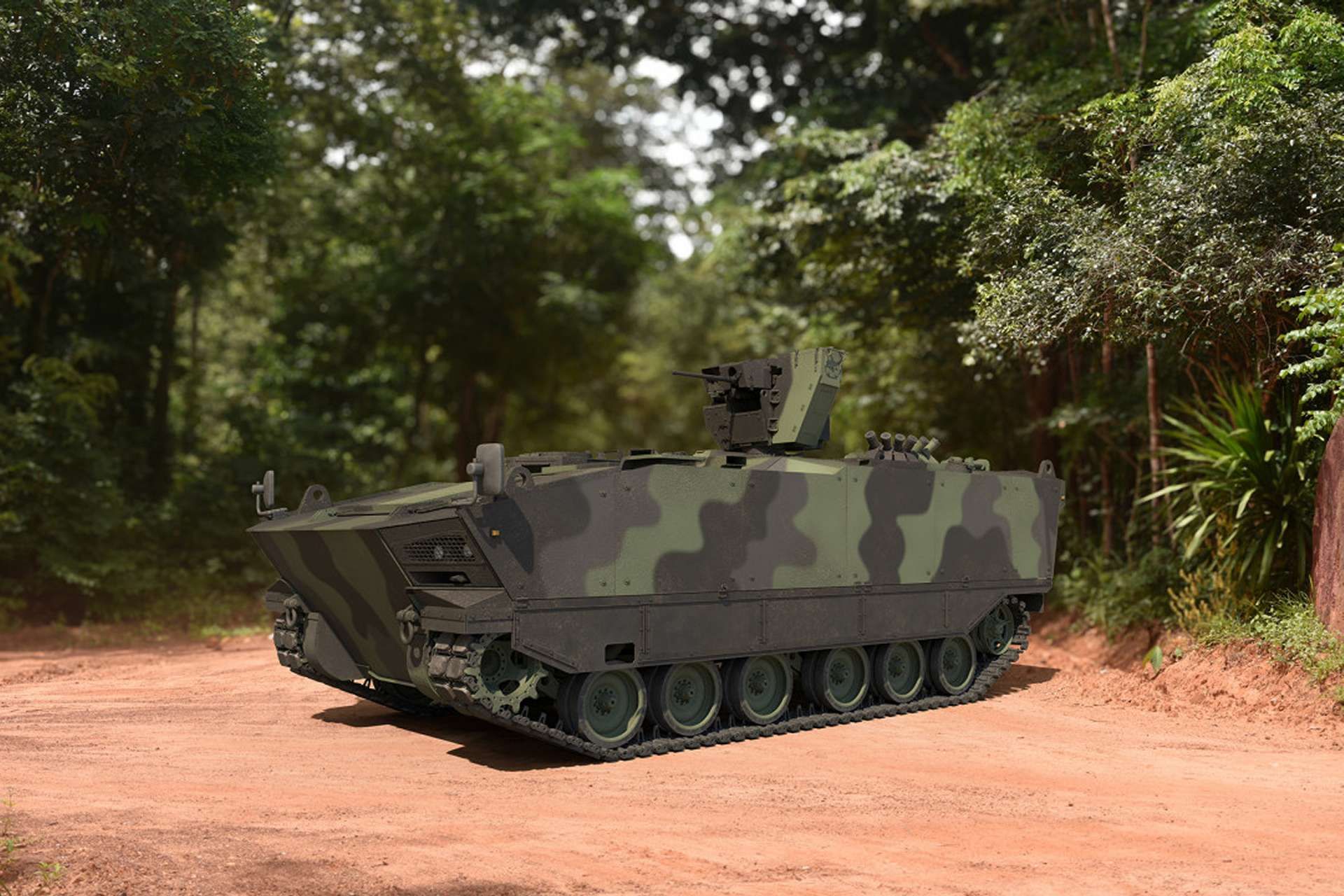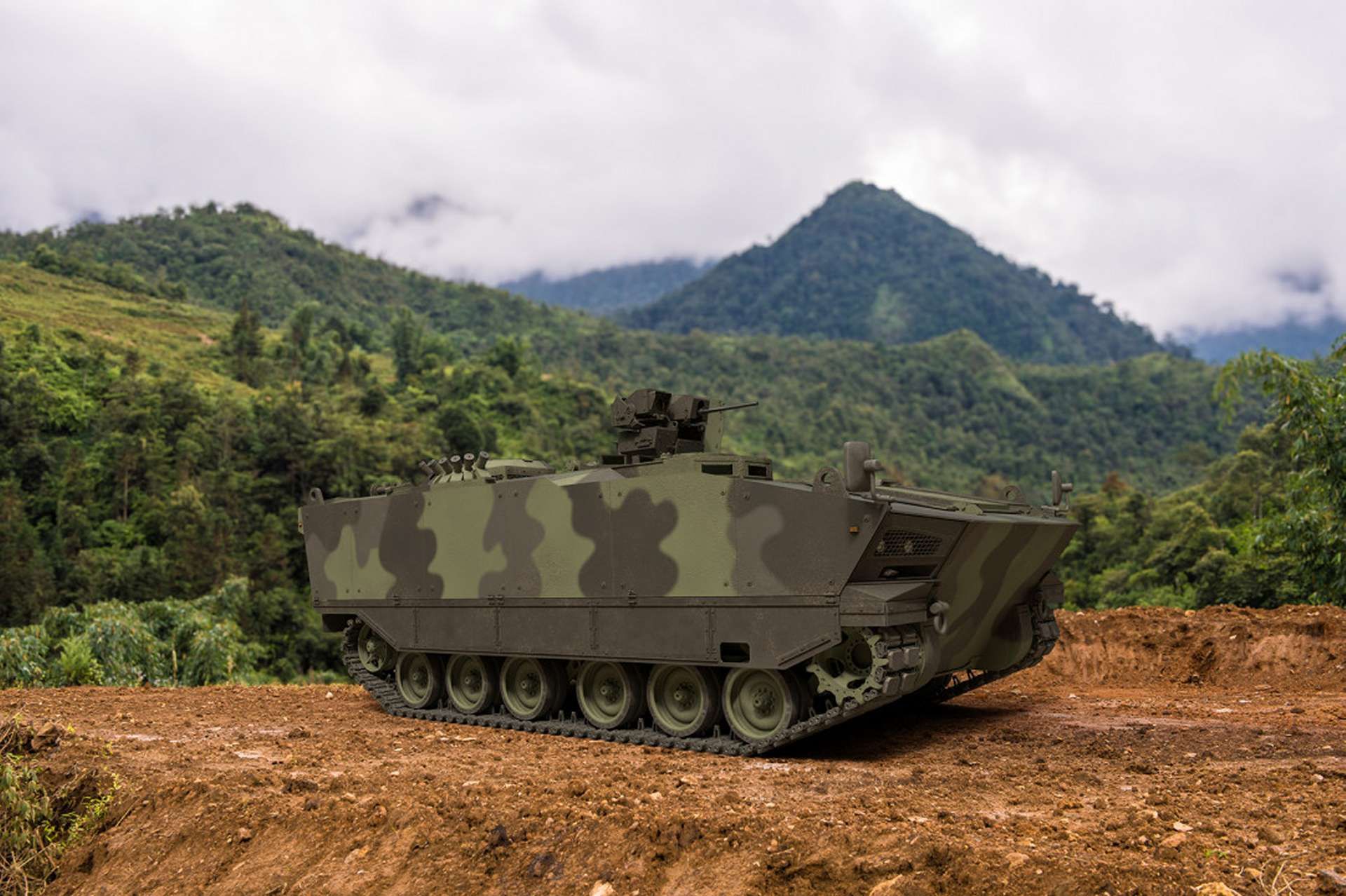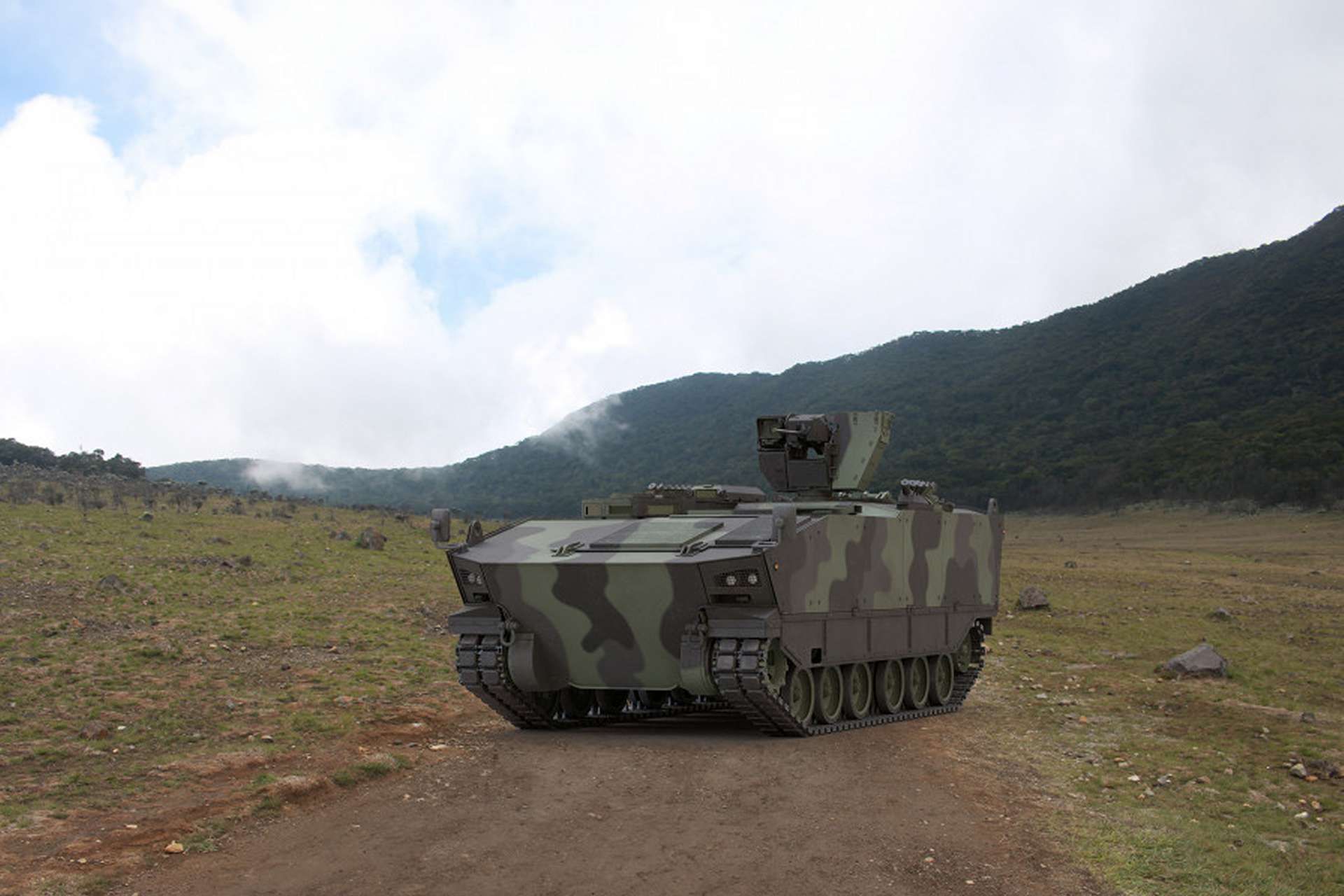Breaking News
Türkiye's new tank-based FNSS Kaplan APC to enter production by 2025 for Indonesia.
On October 22, 2024, FNSS and PT Pindad signed an agreement for the development and production of the new Kaplan Armored Personnel Carrier (APC), as part of a contract between PT Pindad and the Indonesian Ministry of Defense. The agreement aims to meet the Indonesian Army’s requirement for a 30-ton class tracked personnel carrier. This agreement follows the previous collaboration between FNSS and PT Pindad on the Kaplan MT (Harimau) medium tank program, which played a key role in the Indonesian Ministry of Defense’s decision to select these partners again.
Follow Army Recognition on Google News at this link

FNSS presented the conceptual design model of the Kaplan APC for the first time at the SAHA 2024 exhibition in Istanbul, where FNSS CEO Nail Kurt announced the project. (Picture source: Army Recognition)
FNSS presented the conceptual design model of the Kaplan APC for the first time at the SAHA 2024 exhibition in Istanbul, where FNSS CEO Nail Kurt announced the project. Production of the Kaplan APCs will begin in 2025, with the first vehicle being manufactured at FNSS’s facilities in Türkiye and the second at PT Pindad’s facilities in Indonesia. Nail Kurt confirmed that 2025 will focus on design and prototyping, while testing will take place in 2026. The vehicles are expected to be delivered by the end of 2026. Qualification tests will be conducted in both Türkiye and Indonesia to ensure the vehicles meet user specifications.
The Kaplan APC will join FNSS’s Kaplan family of tracked armored vehicles. With a power-to-weight ratio exceeding 22 horsepower per ton, this new Turkish armored personnel carrier accommodates a crew of 13, including the gunner, driver, and commander. Its design supports a variety of mission configurations, offering customizable options for specific operational requirements. For instance, the modular design of the Kaplan APC allows for the integration of both manned and unmanned turret systems.
It can be fitted with light and medium caliber weapons, such as 30 mm or 35 mm cannons, 120 mm mortars, or anti-tank guided missile systems. This versatility enables the vehicle to be configured for a range of missions, including mechanized infantry, reconnaissance, command and control, force protection, medical evacuation, combat engineering, and both direct and indirect fire support.

With a power-to-weight ratio exceeding 22 horsepower per ton, this new Turkish armored personnel carrier accommodates a crew of 13, including the gunner, driver, and commander. (Picture source: FNSS)
An open-architecture electronics infrastructure allows for easy integration of mission systems, such as a 360-degree situational awareness system, a driver vision system, a battlefield management system, and a navigation system. The electrical system operates at 24 volts, and an auxiliary power unit (APU) is available as an optional feature to provide additional operational capabilities when the main engine is not in use.
Protection features meet STANAG 4569 standards, though specific protection levels are classified. This includes ballistic, mine, and improvised explosive device (IED) protection. Optional systems, such as an active protection system to counter anti-tank missiles and rocket-propelled grenades, a laser warning system, and a gunshot detection system, can be integrated depending on operational needs.
Standard protective equipment includes eight smoke grenade dischargers, an automatic fire suppression system, a chemical, biological, radiological, and nuclear (CBRN) protection system, along with air conditioning and heating systems, ensuring the crew can survive and operate effectively in hazardous conditions.

The Kaplan APC can be fitted with light and medium caliber weapons, such as 30 mm or 35 mm cannons, 120 mm mortars, or anti-tank guided missile systems. (Picture source: FNSS)
In terms of mobility, the vehicle is powered by a diesel engine coupled with an automatic transmission, allowing it to reach a top speed of 70 kilometers per hour. It has an operational range of 450 kilometers. The vehicle is capable of handling challenging terrain, with the ability to traverse gradients of up to 60%, side slopes of 30%, vertical obstacles of 0.9 meters, and trench crossings up to 2.2 meters. The track system includes steel tracks with an adjuster and replaceable pads or composite rubber tracks, while the modernized torsion bar suspension system aids in terrain management, reduces internal vibrations, and improves traction.
The Kaplan APC program builds on FNSS’s existing expertise in developing tracked armored vehicles, as this new APC will share many parts and subsystems with the Kaplan MT and other vehicles in FNSS's tracked vehicle family, providing advantages in logistics and maintenance. Additionally, it will share common subsystems with the Marine Assault Vehicle (MAV), which FNSS has supplied to the Turkish Naval Forces Marine Infantry Brigade. These shared components will help improve reliability and reduce the logistical burden for operators, while also enhancing mission readiness by minimizing downtime due to maintenance.

The Kaplan APC will share many parts and subsystems with the Kaplan MT and other vehicles in FNSS's tracked vehicle family, providing advantages in logistics and maintenance. (Picture source: FNSS)


























